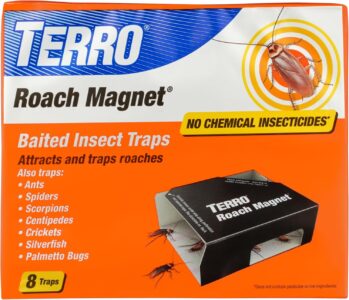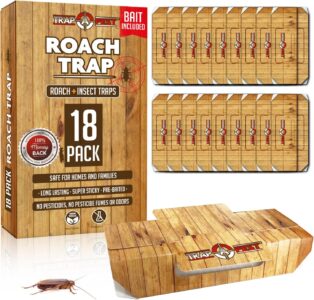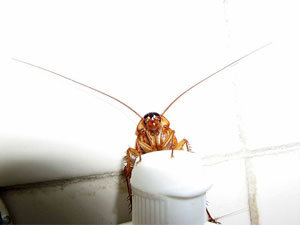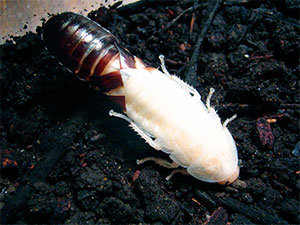Cockroach infestations can turn your peaceful home into a stressful nightmare. These resilient pests multiply quickly and carry diseases, making fast, effective control essential. The best cockroach traps combine proven mechanisms like adhesive surfaces, poison baits, electronic attractants, and species-specific pheromones to eliminate roaches at their source. For maximum effectiveness, pair strategic trap placement with preventive measures like sealing entry points and eliminating food sources.
Quick Picks: Best Cockroach Traps

Editor’s Choice

Best Poison-Free

Best Value
Why Choosing the Right Cockroach Trap Matters

Not all cockroach traps are created equal. Using the wrong type can waste time and money while allowing infestations to worsen. Different cockroach species respond to different attractants and trap mechanisms, making proper selection crucial for success.
The most effective cockroach control combines the right trap type with strategic placement and complementary prevention methods. A single approach rarely eliminates established infestations completely.
Key Features to Consider When Selecting Traps
- Target Species EffectivenessDifferent cockroach species have varying behaviors and preferences. German cockroaches, for example, are more attracted to sweet baits, while American cockroaches prefer protein-based attractants.
- Safety ProfileHouseholds with children and pets require non-toxic options or traps with secure, tamper-resistant designs to prevent accidental exposure to pesticides.
- Coverage CapacityLarge infestations demand multiple traps or high-capacity models. Calculate one trap per 10-15 square feet in heavily infested areas for optimal coverage.
- Ease of DeploymentComplex setup procedures can delay treatment and reduce effectiveness. Look for traps with simple activation and clear placement instructions.
- Durability and LongevityQuality traps maintain effectiveness for weeks or months, while cheap alternatives may fail within days, requiring frequent replacement.
- Verified PerformanceCustomer reviews and independent testing provide valuable insights into real-world effectiveness beyond manufacturer claims.
Types of Cockroach Traps: Complete Guide
Adhesive Glue Traps
Glue traps use ultra-sticky surfaces to capture cockroaches as they traverse the trap. These non-toxic options work immediately upon contact and provide visual confirmation of infestation levels.
Trap-A-Pest Roach Traps Indoor Sticky Glue Traps
Best ValueHow Does It Work
How to Use
- Identify high-traffic areas and cockroach pathways
- Remove protective film from adhesive surface
- Place traps flat on floors or use adhesive backing for walls
- Position along baseboards, under appliances, and in corners
- Check traps daily and replace when full or less sticky
- Exceptional value with 18 traps per package
- Extra-strong adhesive maintains stickiness longer
- Versatile placement options (floor or wall mounting)
- Completely non-toxic and odorless
- Works immediately upon deployment
- No attractant increases required trap density
- May lose effectiveness in dusty environments
- Larger cockroaches might escape if not fully stuck
- Single-use design requires frequent replacement
Advantages
- Completely non-toxic and safe around pets
- Immediate results with no waiting period
- Captures multiple roaches per trap
- Also traps other crawling insects
Limitations
- Requires direct contact to work
- May lose stickiness in dusty environments
- Single-use only
- Can trap beneficial insects
Poison Bait Traps
Bait traps combine attractants with slow-acting insecticides. Cockroaches consume the poisoned bait and return to hiding spots, where they die and potentially poison others through secondary consumption.
Hot Shot Liquid Roach Bait Killer
Editor's ChoiceHow Does It Work
How to Use
- Keep hands dry when handling bait stations
- Remove paper backing to expose adhesive
- Place stations in corners, under sinks, and near entry points
- Monitor stations weekly and replace when empty
- Maintain stations for 3 months for complete colony elimination
- Dual food and water attractants increase effectiveness
- Quick-acting formula shows results within days
- Targets breeding areas for long-term control
- Child-resistant station design
- Works on all common cockroach species
- Contains pesticides requiring careful handling
- May take several days to see full results
- Stations can be chewed by pets if accessible
Always keep bait traps away from children and pets. Even “pet-safe” formulations can cause illness if consumed in large quantities.
How Bait Traps Work:
- Attractants lure cockroaches to feeding stations
- Roaches consume poisoned bait
- Slow-acting formula allows return to nest
- Secondary poisoning affects nest mates
- Colony population declines over 1-2 weeks
Electronic Traps
Advanced electronic traps use combinations of light, heat, and chemical attractants to lure cockroaches into elimination chambers. These high-tech solutions often provide the fastest results for severe infestations.
Electronic Trap Selection Tips
- Check power requirements and cord length
- Verify coverage area matches your space
- Look for models with indicator lights
- Consider noise levels for bedroom placement
- Read reviews for reliability information
Pheromone Traps
These specialized traps use synthetic sex pheromones to attract male cockroaches, disrupting breeding cycles and providing long-term population control.
TERRO Poison Free Roach Magnet Trap
Best Poison-FreeHow Does It Work
How to Use
- Remove paper backing to expose adhesive surface
- Fold along designated lines to create triangular shape
- Place near suspected insect pathways and hiding spots
- Check traps weekly for captured insects
- Replace every 3 months or when full
- Completely poison-free and non-toxic
- Captures multiple pest species simultaneously
- Discrete design blends into home décor
- Three entry points maximize capture efficiency
- Long-lasting pheromone attractants
- May capture beneficial insects
- Requires direct contact to work effectively
- Less effective on large infestations alone
- Triangular shape may not fit all spaces
Pheromone traps work best as part of integrated pest management programs, not as standalone solutions. Combine with other trap types for comprehensive control.
DIY Cockroach Trap Solutions
Homemade traps can provide temporary relief or supplement commercial options, though they typically offer lower effectiveness rates than professional products.
Effective DIY Options
| Trap Type | Materials Needed | Effectiveness | Safety Level |
|---|---|---|---|
| Baking Soda & Sugar | Equal parts baking soda and sugar | Moderate | High (non-toxic) |
| Jar Trap | Glass jar, petroleum jelly, bait | Low-Moderate | High |
| Coffee Grounds | Damp coffee grounds, container, plastic wrap | Low | High |
| Wine Bottle | Empty bottle, sweet liquid bait, funnel | Low | High |
DIY traps work best for monitoring and small populations. Severe infestations require professional-grade solutions for effective elimination.
Strategic Trap Placement Guide
Proper placement dramatically impacts trap effectiveness. Cockroaches follow predictable movement patterns that can be exploited for maximum capture rates.
Prime Placement Locations
Kitchen Areas
- Under sink and behind appliances
- Along cabinet baseboards
- Near garbage disposal and dishwasher
- Inside pantry corners
Bathroom Zones
- Behind toilet and under vanity
- Near plumbing entry points
- Inside medicine cabinet base
- Around bathtub perimeter
General Areas
- Along wall-floor junctions
- Near electrical outlets
- Behind furniture and electronics
- In basement and crawl spaces
Optimization Strategies
- Follow the Wall Rule: Place traps within 3 inches of walls where cockroaches naturally travel
- Create Trap Networks: Space traps 6-10 feet apart in heavily infested areas
- Monitor and Adjust: Move traps to areas showing highest capture rates
- Replace Regularly: Maintain trap effectiveness through scheduled replacement
Maximizing Trap Effectiveness
Success depends on more than just trap selection. Environmental factors, timing, and complementary strategies significantly impact results.
Critical Success Factors
- Timing ConsiderationsDeploy traps during peak activity periods (nighttime) and check them early morning for best results.
- Environmental ControlReduce competing food sources and moisture to increase trap attractiveness and effectiveness.
- Species-Specific ApproachesGerman cockroaches prefer sweet baits while American cockroaches respond better to protein-based attractants.
- Population MonitoringTrack capture rates to assess infestation severity and adjust trap density accordingly.
- Patience and PersistenceAllow 2-4 weeks for comprehensive population reduction, especially with bait-based systems.
Professional Tips for Better Results
- Rotate trap types monthly to prevent avoidance behavior
- Use sticky traps for monitoring alongside active elimination methods
- Maintain detailed logs of trap locations and capture rates
- Address moisture issues that attract cockroaches to treated areas
- Combine multiple trap mechanisms for comprehensive coverage
Long-Term Prevention Strategies
Effective cockroach control extends beyond trapping to address root causes that allow infestations to develop.
Essential Prevention Measures
Physical Exclusion
- Seal cracks and gaps with caulking
- Install door sweeps and weather stripping
- Screen vents and drainage openings
- Repair damaged screens and seals
Sanitation Control
- Clean up food debris immediately
- Store food in sealed containers
- Empty garbage regularly
- Wipe down surfaces nightly
Moisture Management
- Fix plumbing leaks promptly
- Use dehumidifiers in damp areas
- Improve ventilation systems
- Address drainage problems
Integrated Pest Management Approach
The most successful long-term cockroach control combines multiple strategies:
- Monitoring: Regular inspection and trap checking
- Prevention: Eliminating conditions that support infestations
- Treatment: Strategic use of traps and other control methods
- Evaluation: Assessing results and adjusting approaches
Severe infestations may require professional pest control services. Contact experts if DIY methods fail to achieve significant population reduction within 4-6 weeks.
When to Call Professional Services
Certain situations warrant professional intervention beyond DIY trap deployment:
- Large-scale infestations with dozens of cockroaches visible daily
- Multiple species present requiring specialized treatment protocols
- Recurring problems despite consistent trapping efforts
- Health concerns for family members with allergies or asthma
- Commercial properties requiring rapid, guaranteed elimination
Professional services typically cost $100-$400 for initial treatment, while comprehensive trap programs may cost $30-$100 monthly. Compare long-term costs when making decisions.
Frequently Asked Questions
How long do cockroach traps take to work?
Glue traps work immediately upon contact, while bait traps typically show results within 3-7 days. Complete population reduction may take 2-4 weeks depending on infestation severity and trap type used.
Electronic and pheromone traps usually demonstrate effectiveness within the first week of deployment when properly positioned.
Are cockroach traps safe around pets and children?
Non-toxic options like glue traps and pheromone traps are completely safe around family members. Bait traps contain pesticides and should be placed in tamper-resistant stations or areas inaccessible to children and pets.
Always read product labels carefully and follow manufacturer safety instructions for proper deployment.
How many traps do I need for my home?
Use one trap per 100-150 square feet for light infestations, or one trap per 50-75 square feet for severe problems. Kitchens and bathrooms typically require higher trap density due to increased cockroach activity.
Monitor capture rates and adjust trap quantities based on results observed over the first two weeks.
What’s the best bait for cockroach traps?
German cockroaches prefer sweet baits like sugar water or fruit, while American cockroaches respond better to protein-based attractants like peanut butter or meat. Commercial baits often combine multiple attractants for broader effectiveness.
Freshen homemade baits every 2-3 days to maintain attractiveness and prevent spoilage.
Can I use multiple trap types simultaneously?
Yes, combining different trap mechanisms often produces better results than using single approaches. Use glue traps for monitoring, bait traps for elimination, and pheromone traps for breeding disruption.
Avoid placing different trap types too close together, as they may interfere with each other’s effectiveness.
Why aren’t my cockroach traps working?
Common issues include improper placement away from cockroach pathways, competing food sources reducing trap attractiveness, wrong trap type for target species, or insufficient trap density for infestation size.
Try relocating traps to higher-activity areas, eliminating alternative food sources, and increasing trap quantities if initial deployment proves ineffective.
How often should I replace cockroach traps?
Replace glue traps when full or every 2-4 weeks, bait traps when empty or every 3 months, and electronic traps according to manufacturer specifications. Pheromone traps typically need replacement every 6-8 weeks.
More frequent replacement may be necessary in high-humidity environments or areas with heavy dust accumulation.
Do cockroach traps attract more roaches to my home?
Properly designed traps capture more cockroaches than they attract from outside. However, poorly sealed bait stations or open attractants might draw roaches from neighboring areas temporarily.
Use enclosed trap designs and maintain proper sanitation to prevent attracting additional cockroaches to your property.
Successful cockroach elimination requires combining the right trap types with strategic placement and comprehensive prevention measures. Start with proven commercial products like Hot Shot Liquid Bait for severe infestations, TERRO Roach Magnets for family-safe options, or Trap-A-Pest glue traps for budget-conscious approaches.
Remember that traps work best as part of integrated pest management programs addressing sanitation, exclusion, and environmental factors that support cockroach populations. Monitor results consistently and adjust strategies based on capture rates and infestation response.
Deploy multiple trap types simultaneously, maintain consistent monitoring schedules, and address underlying conditions that attract cockroaches. Patience and persistence typically yield better long-term results than sporadic intensive treatments.




Quick question, I have both a child and two pets (dog and cat). I can see what options for killing roaches are available but I’m more concerned with putting traps/hotels inside my cabinets where there is food. Is it best just to put them outside the cabinet(s). I don’t see any roaches, maybe one or two over the past six months, but am trying to prevent them and/or draw them out to get rid of them. As far as my child and pets are concerned, I’m most worried about the dog. She’s curious and tends to get into almost everything so I guess really the traps need to be safe around good and dogs. Any advice would be grreatly appreciated.
Thank you, Michelle
Hey Michelle, since you’re only seeing the occasional roach and want to stay ahead of it, you don’t need to put traps inside food cabinets, especially with kids and a curious dog around. Roaches are more likely to roam around warm, dark spots like under the fridge, behind the stove, or along baseboards. Placing enclosed bait stations or gel bait in those out-of-reach areas works well and keeps things safer for your pup.
To add an extra layer of prevention, keep things clean and dry (roaches love crumbs and moisture), and consider using natural deterrents like bay leaves or peppermint oil in non-food areas. No need to go overboard just yet!